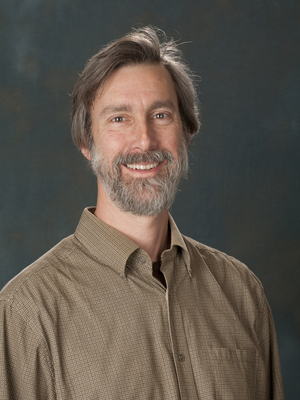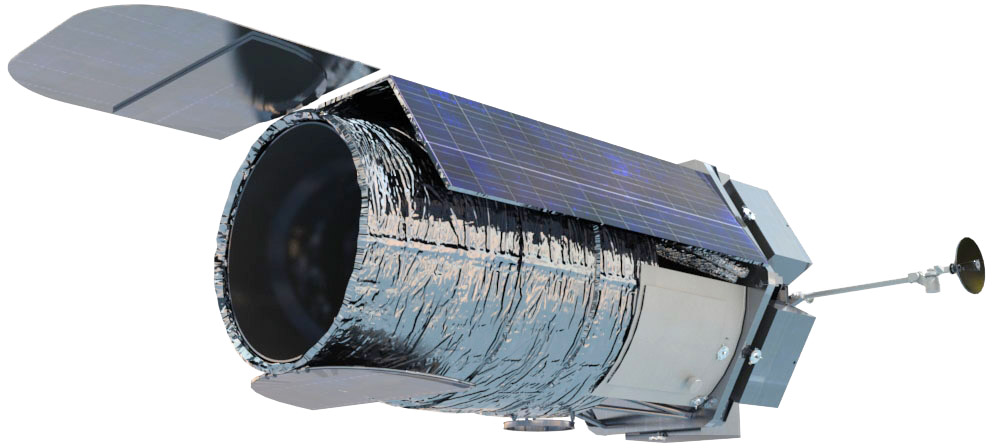Gravity pulls everything together, right? We grow up learning and understanding this basic scientific rule.
But if that’s so, why is the expansion of the universe speeding up instead of slowing down?

“It’s like throwing your car keys in the air and having them accelerate upwards and disappear from sight,” said David Weinberg, Ph.D., chair of the Department of Astronomy at The Ohio State University. Weinberg is hoping that NASA’s Wide Field Infrared Survey Telescope (WFIRST) will play a central role in resolving this puzzle after it launches in the mid-2020s.
“The most distant objects in the universe are accelerating away from us,” Weinberg said. “This is a very surprising phenomenon, and we want to understand why it’s happening. It’s the biggest mystery in cosmology today.”
For the past five years, Weinberg – whose own research has been buoyed by the Ohio Supercomputer Center for the past 15 years – has been on NASA’s Science Definition Team for the preliminary study of WFIRST along with Ohio State colleagues Scott Gaudi and Chris Hirata. After that preliminary study, NASA announced in February it would move forward with the WFIRST mission.
“It’s definitely been exciting to be a part of,” Weinberg said. “To finally have an official start is great for all the people who have been working on this mission.”
The new space telescope is moving into construction just as the James Webb Space Telescope (JWST), which has a much larger mirror but observes only a tiny patch of sky at a given time, approaches its launch in 2018.
“’Wide field’ means that WFIRST sees a lot of the sky at one time, and this is where it’s different in important ways from the Hubble Space Telescope, or from JWST,” Weinberg said. “WFIRST images the sky in infrared light and measures spectra of galaxies and stars, and it can do that 200 times faster than Hubble can.”
WFIRST has three defining goals: understanding the origin of accelerating cosmic expansion, making a census of planets around other stars through gravitational microlensing, and directly imaging giant planets around the closest stars. Hirata and Weinberg are most closely involved with the first study. “We are hoping to crack the problem by measuring expansion and clustering much better than anyone has done before, with an accuracy of about 0.1 percent,” Weinberg said.
Gaudi is the principal investigator of the planetary microlensing program, which will monitor an area of sky near the center of the Galaxy in a series of 2-month campaigns, totaling more than a year. This approach to planet hunting was pioneered in the 1990s by Gaudi’s thesis advisor, Ohio State astronomer Andrew Gould.
When two stars align almost perfectly, the gravity of the foreground star focuses the light of the background star like a magnifying glass in front of a candle flame. A planet orbiting the foreground star disturbs the magnification, allowing detection of the planet and an approximate measurement of its mass.

"Microlensing is currently the most sensitive method for finding planets in orbits from their parent stars that are further than that of the Earth," Gaudi was quoted as saying in an Ohio State University article, “but it relies on extremely rare alignments, so after many years of ground-based searches we still have only a few dozen detected planets.”
WFIRST will combine a wide, clear view from space with ultra-sensitivity to infrared light, giving it the unprecedented ability to detect thousands of microlensing planets.
Along with Ohio State’s strong connection to the project, the Ohio Supercomputer Center helped lay some groundwork and could be instrumental in the future.
The OSU research team has pursued many projects with OSC. Hirata has used OSC systems housing the Center of Cosmology and Astro Particle Physics condo. Gould – a longtime user – currently has a personal project titled Finding Planets by Intensive Modeling of Gravitational Microlensing Events. Weinberg has used OSC services for 15 years and has two personal projects: Pinpointing the Physics of a Key Dark Energy Probe and Connecting Mergers of Supermassive Black Holes and Their Formation During Hierarchical Galaxy Assembly.
Weinberg said OSC has assisted in a strong but indirect way with the WFIRST project. He said his own scientific work is mostly about understanding the formation of galaxies and the large-scale structure of the universe.
“A lot of this work has been doing supercomputer simulations of formation of galaxies and of large-scale structures in which we start with small fluctuations we expect to be present in the early universe and use computers to calculate the effects of gravity,” he said. “This is a very computation-heavy field and it’s aimed at making predictions for the kinds of things WFIRST will measure.”
Weinberg’s students Ben Wibking and Andres Salcedo are carrying out calculations at OSC to make highly precise predictions of gravitational lensing by galaxies and clusters of galaxies, and of the clustering of galaxies themselves.
“Right now we’re doing this with our eyes on the ground-based Dark Energy Survey,” Weinberg said, “but the same framework should be applicable to WFIRST. Over the next five years, we’re going to be using OSC computers to help us develop the tools that we’re going to use to analyze WFIRST data when it arrives, and to define how the telescope needs to work in order to produce the science that we want.”
###
Written by Ross Bishoff